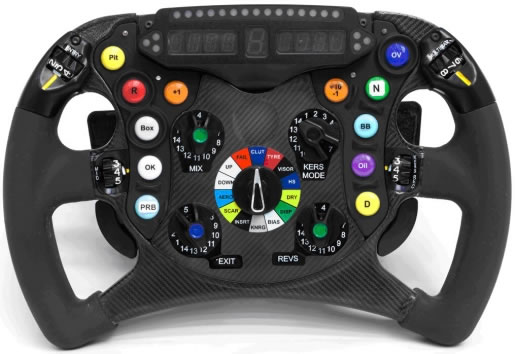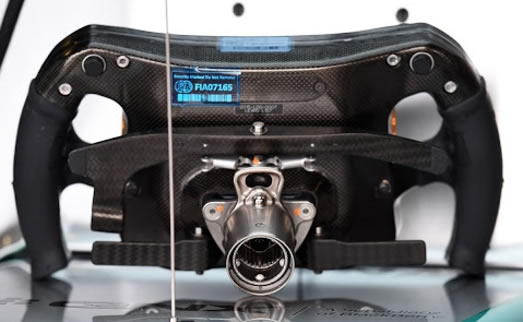Steering wheel
Not surprisingly, the purpose of a steering wheel is simple enough - to transmit the driver's input to the steered wheels of the vehicle in question - when that vehicle is a Formula 1 car, however, simple is hardly an appropriate term.

The first Formula One steering wheel did not have any gauges, any knobs, buttons or dials. It was just that, a steering wheel. Early F1 cars used steering wheels taken directly from road cars. They were normally made from wood (necessitating the use of driving gloves), and in the absence of packaging constraints they tended to be made as large a diameter as possible, to reduce the effort needed to turn. As cars grew progressively lower and cockpits narrower throughout the 1960s and 1970s, steering wheels became smaller, so as to fit into the more compact space available.
The advent of complex electronic systems in Formula 1 throughout the 1990s changed all that. Ferrari engineer John Barnard was the first to introduce semiautomatic sequential gearbox 1989 in the Ferrari 640, first time driven in Brazilian GP by Nigel Mensel.
It was introduced as a lever system at the back of the steering wheel. This system enabled Nigel Mansell to shift gears without having to move a hand away from the steering wheel. A pull on the left paddle will shift one gear down while the right paddle shifts up in a similar way.
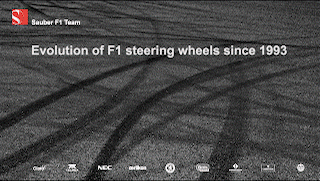 |
Sauber F1 Team - Shared publicly - Jun 21, 2013 |
 |
Ferrari 640 steering wheel |
This eliminates the possibility of a driver missing a gear, therefore increasing the smoothness and improving the timing of gearshifts. Together with the introduction of semi-automatic gearboxes, this was one of the most changing introductions in the history of Formula One, especially on the driver's side. Later on, when left foot braking was introduced into Formula One, the clutch pedal was removed and replaced by a fully automatic hydraulic clutch paddle behind the wheel, activated by driver only during the stand still start.
The first buttons to appear on the face of the steering wheel were the 'neutral' button (vital for taking the car out of gear in the event of a spin), drinking button and the on-board radio system's push-to-talk button.
As time went on, the trend continued. Excepting the throttle and brake pedals, few Formula One cars have any controls other than those on the face of the wheel. Buttons tend to be used for 'on/off' (digital) functions, such as engaging the pit-lane speed limiter system, while rotary controls govern functions with multiple settings, such as engine mapping, traction control program (banned after 2008 by FIA rules), fuel mixture and even the car's front-to-rear brake bias and the advent of launch control programs (banned after 2008 by FIA rules), that optimized the race start procedure all required various buttons and toggle switches to enable the driver to fine-tune his car's settings while on-track.
The steering wheel is also used to house instrumentation, normally via a multi-function LCD display screen and - more visibly - the ultra-bright 'change up' RPM lights that tell the driver the perfect time for the optimum gearshift. Race control can also communicate with the driver via a compulsory, steering-wheel mounted GPS marshalling system. This displays warning lights, with colors corresponding to the marshals' flags, to alert drivers to approaching hazards, such as an accident, on the track ahead.
The steering wheels are not designed to make more than three quarters of a turn of lock in total, so there is no need for a continuous rim, instead there are just two 'cut outs' for the driver's hands.
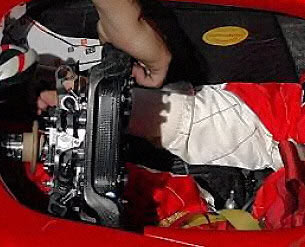 One of the most technically complicated parts of the whole Formula One car is the snap-on connector that joins the wheel to the steering column. This has to be tough enough to take the steering forces, but it also provides the electrical connections between the controls and the car itself. The FIA technical regulations state that the driver must be able to get out of the car within five seconds, removing nothing except the steering wheel - so rapid release is vitally important.
One of the most technically complicated parts of the whole Formula One car is the snap-on connector that joins the wheel to the steering column. This has to be tough enough to take the steering forces, but it also provides the electrical connections between the controls and the car itself. The FIA technical regulations state that the driver must be able to get out of the car within five seconds, removing nothing except the steering wheel - so rapid release is vitally important.
Formula One cars now run with power assisted steering, reducing the forces that must be transmitted by the steering wheel. This has enabled designers to continue with the trend of reducing the steering wheel size, with the typical item now being about half the diameter of that of a normal road car.
The manufacture of any part on a Formula 1 car is a complex process, and the steering wheel is no exception. Many different lightweight materials are used in its manufacture, including carbon fiber, aluminium, titanium, steel, rubber and plastic, and a complete steering wheel can take approximately 100 hours to beproduced from start to finish.
With the average steering wheel controlling as many as 12 to 15 separate parameters on the car, there are a large number of components, buttons and switches that have to be fitted during the manufacturing process - some 120 separate items in all. Yet, despite the myriad of materials and parts that make up each completed wheel, the weight of the finished unit, as fitted to the car, is just 1.3 kilograms.
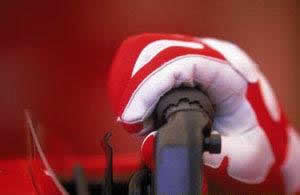
Wheels are partialy custom-built for each driver. While the buttons in every one of a team's cars will be in identical positions, the functions can be changed to suit the individual driver's preferences. One may want to have the radio button under his right thumb, the other to work it with his left index finger.
As a software and electronics engineer for the AT&T Williams team for the last seven years, Stuart O'Neill has observed the ever-changing demands on drivers. He has worked during 2008 with the mechanical engineer Mike Dean on developing the wonders of the F1 steering wheel.
"In 2008 the FIA changed the regulations and standardized the equipment," O'Neill said. "This season every team has the same display on its steering wheels, with a few variations. But the functionality of the knobs and rotary knobs will differ from team to team."
O'Neill tailors the technology to the two Williams drivers, Nico Rosberg and Kazuki Nakajima. "Nico likes to hold the top of the wheel, with his thumbs over the top section," O'Neill said. "So we have tried to put all the key buttons high up, so they are within easy reach for him."
The grip on the steering wheel is made by taking a mould from the driver's gloved hand, to again obtain a perfect fit. It is then covered with suede like material which is not slippery if it gets wet.
When Rubens Barrichello threw his steering wheel out of the car during Monaco GP 2010, on Sunday, the electronics engineers and the accountants at Williams will have screamed. Those things are packed full of incredibly complex electronics and are expensive - over 45,000$ a piece!
Television coverage show modern F1 drivers constantly operating steering wheel controls. In addition to the clutch and gear change functions on the back of the wheel, there are many settings to change, to trim the car and look after the tires.
I was surprised to learn how much a driver can do by adjusting the differential. There are three separate dials to adjust its behavior on the corner entry, the mid corner and the corner exit (all part of differential settings).
So if a car is suffering from understeer, for example, he can trim the corner entry dial to help that. It is also in use during the race as a driver tries to manage his tire wear, particularly on the super soft tire in Monaco.
What they can do now plays a much greater part in how their cars perform in a race, rather than just let them have a cooling drink or be bawled out by the team manager. Michael Schumacher was a real all-rounder in this respect. He could make adjustments while on the circuit and during cornering. He would change the settings because he understood the engineering behind it. Someone like Michael, who took 7 drivers championships, couldn't get enough of the technology. Michael Schumacher would be throttling into a bend at 200kph and he would be changing the settings of brake bias and engine mapping on the steering wheel to prepare car for next corner, never loosing concentration. He was beginning of the games console generation, and more and more drivers are like him. The technology does not faze them.
For some, there are just too many buttons to choose from, while most of their concentration is directed at actually driving the car.
Pressing the wrong button is often (but not always) the reason for some driver losing radio contact with his pit, or breaking the pit lane speed limit when he pressed the water button rather than the speed limiter.
It takes a driver 0.9 seconds to visually check dashboard-displayed information in the cockpit. In that time, a car traveling at maximum speed (based on the top speed of an F1 car - 320km/h) will have moved a distance of 80 meters, and that equates to a large proportion of a high speed corner. It is therefore critical to ensure the quickest checking time by correctly positioning switches and displays, and sizing the displays large enough to overcome the problems of vibration which cause difficulty in focusing in the vibration-filled environment experienced by the driver.
The LED RPM cluster tends to be positioned on the top part of the steering wheel, so that the display is not masked by the wheel when turning, and is visible at all times. As gears are often changed in the middle of the corners, this is very important. The driver's eyes will be focused on the direction the car is traveling, and the display will move with his field of vision. For this reason, all displays are now situated on the steering wheel.
In addition to the major displays, a group of three LEDs is positioned on the dashboard for marshalling. These are intended to warn the drivers in the following manner - yellow (for 'Danger Ahead'), red (for 'Stop'), and blue (for 'Leading car trying to pass'). The colors come from the current marshalling system of flags, which are becoming increasingly difficult to see as marshalling posts move further and further away from the track, and are therefore further out of the drivers' eyesight. By having lights in the cockpit, the driver is immediately alerted without having to search for the signals. In the old days drivers were known to say they hadn't seen the yellow flag, which means 'caution - no overtaking'. All drivers probably do it if they can get away with it, if they can put a move on someone. But that excuse is not available any longer.
The cockpit instrumentation is designed to give the driver the ultimate in easy-view information and with modern technology improving at such a rate, developments are constantly leading to new designs and new ideas in the cockpit environment. It is crucial to ensure the driver has full concentration on the road ahead, and avoids any distractions. Attention to detail in this area can make all the difference.
| BMW Sauber F107, 2008 | |
|---|---|
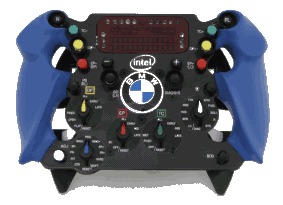 |
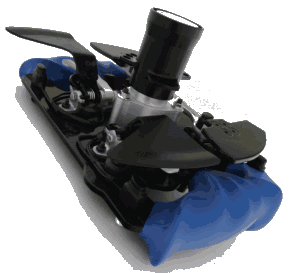 |
| Vodafone Mclaren Mercedes MP4-22A2, 2008 | |
|---|---|
 |
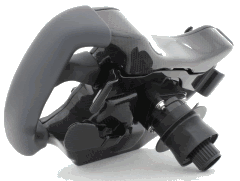 |
| Ferrari F2008 | |
|---|---|
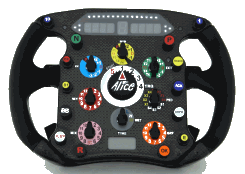 |
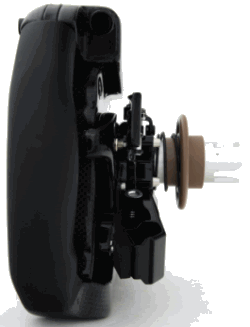 |
| Williams 2008 | Toyota 2008 |
|---|---|
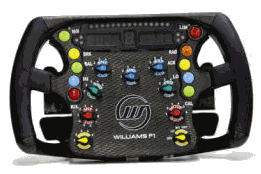 |
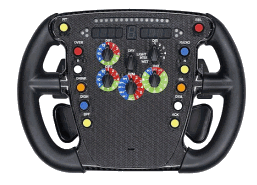 |
| Red Bull Racing 2008 |
|---|
 |
| Mercedes-AMG Petronas 2015 |
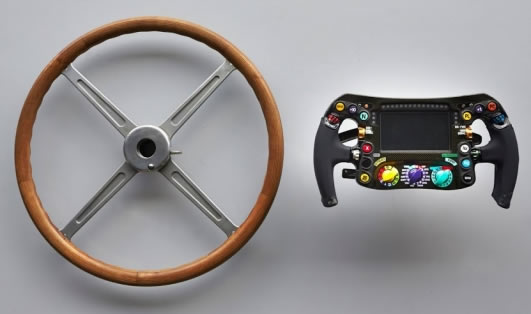 |
|
Here you can learn more about steering column and steering technique.
Back to the top of the page

